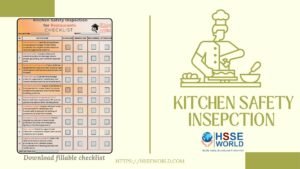OSHA Limits on Workplace Noise Feed Complaints
3 min readEmployers need to take measures to protect themselves from costly litigation.Just how loud is too loud for employees in a workplace? According to the Occupational Safety and Health Administration (OSHA), the problem of ear-damaging work site sounds is more widespread than you might think, and both employees and employers are paying the price.

At least 22 million workers are exposed to potentially damaging noise at work each year, OSHA reports. In 2017, employers were required to pay $1.5 million in penalties for not protecting workers from noise. OSHA also estimates that approximately $242 million is spent on workers’ compensation claims for hearing loss.
Each time an employee files a claim for occupational hearing loss (as opposed to traumatic hearing loss), the claim primarily relies on lay testimony and on the largely uncorroborated statements from the claimant that the noise at work is “loud,” notes attorney Alexis Hatten of the Goldberg Segalla law firm.
“In many cases, those statements alone, along with a doctor’s report that generally states ‘claimant is exposed to noise at work’ is sufficient to establish the claim,” she says. “After all, the judge cannot hear what the claimant hears. Defense counsel cannot hear what the claimant hears. The claimant’s doctor cannot hear what the claimant hears.”
In 1981, OSHA adopted regulations requiring employers to create a Hearing Conservation Program in situations where workers are exposed to a time-weighted average noise level of 85 A-weighted decibels (dBA) or higher throughout an eight-hour shift.
These Hearing Conservation Programs require employers to measure noise levels, provide free annual hearing exams and free hearing protection, provide training, and conduct evaluations of the adequacy of the hearing protection equipment unless changes to tools, equipment and schedules are made to reduce exposure below the 85-dBA level.
OSHA’s maximum permissible (as opposed to day-long average) exposure limit is 90 dBA for all workers for an eight-hour day. In addition, the OSHA standard employs a 5-dBA exchange rate. This means that when the noise level is increased by 5 dBA, the amount of time a person can be exposed to a certain noise level to receive the same dose is cut in half.
Measuring Up, or Down?
These decibel levels may not be that hard to reach on occasion, but for a charge to stick they must be sustained throughout the workday. By way of example, an average factory produces at least 80 dBA, a car wash at 20 feet is 89; propeller plane flyover at 1,000 feet is 88, a diesel truck at 40 mph at 50 feet is 84, a diesel train at 45 mph at 100 feet is 83, a milling machine is 85 and even a food blender registers 88.
The National Institute for Occupational Safety and Health (NIOSH), the federal agency responsible for research and recommendations to prevent work-related injuries, recommends that all worker exposures to noise should be controlled below a level equivalent to 85 dBA for eight hours to minimize occupational noise-induced hearing loss.
Hatten says the first thing for an employer to do after receiving notice of a hearing loss claim that you wish to challenge is to obtain a professional noise reading completed as quickly as possible by an occupational health and safety specialist or technician specializing in collecting and analyzing data on many types of work environments.
“If the average decibel levels are below 85 dBA, you have the best possible proof that the claimant was not exposed to noise loud enough or consistent enough to cause hearing loss,” she points out.
The report then can be entered into evidence much like a vocational rehabilitation report. However, given that this report may need to be authenticated, and the specialist or technician may need to testify, these tests should be run as soon as possible, and the report provided to defense counsel.
The report should also be provided to an independent medical examination doctor for comment on the possibility that these particular noise readings could cause the employee’s hearing loss.
“If your noise readings are under the industry standard 85 dBA (and, of course, the lower the noise readings are, the better), it is hard to imagine that any judge would ignore these scientific readings to establish a hearing loss claim based on claimant’s vague descriptions of ‘loud’ noises,” Hatten concludes. “You can, and should, deny such a claim confidently.”



